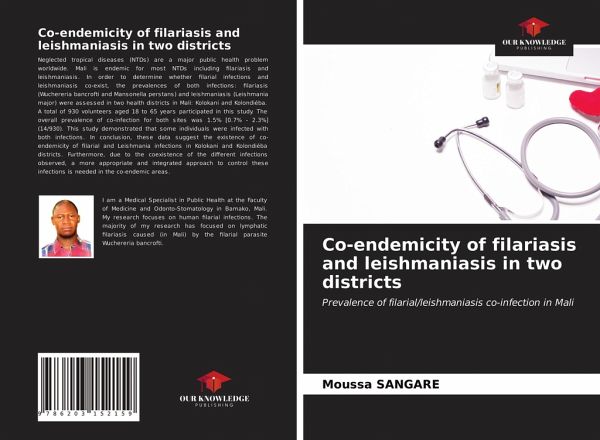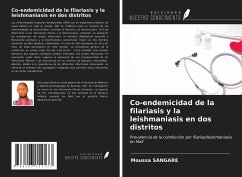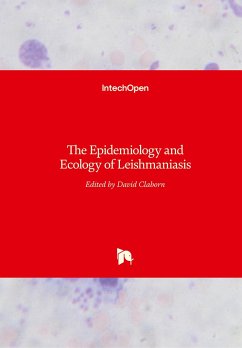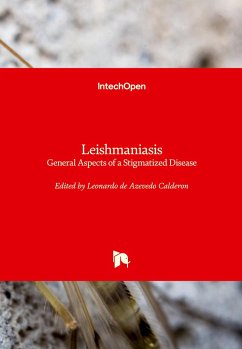
Co-endemicity of filariasis and leishmaniasis in two districts
Prevalence of filarial/leishmaniasis co-infection in Mali
Versandkostenfrei!
Versandfertig in 1-2 Wochen
26,99 €
inkl. MwSt.

PAYBACK Punkte
13 °P sammeln!
Neglected tropical diseases (NTDs) are a major public health problem worldwide. Mali is endemic for most NTDs including filariasis and leishmaniasis. In order to determine whether filarial infections and leishmaniasis co-exist, the prevalences of both infections: filariasis (Wuchereria bancrofti and Mansonella perstans) and leishmaniasis (Leishmania major) were assessed in two health districts in Mali: Kolokani and Kolondiéba. A total of 930 volunteers aged 18 to 65 years participated in this study. The overall prevalence of co-infection for both sites was 1.5% [0.7% - 2.3%] (14/930). This st...
Neglected tropical diseases (NTDs) are a major public health problem worldwide. Mali is endemic for most NTDs including filariasis and leishmaniasis. In order to determine whether filarial infections and leishmaniasis co-exist, the prevalences of both infections: filariasis (Wuchereria bancrofti and Mansonella perstans) and leishmaniasis (Leishmania major) were assessed in two health districts in Mali: Kolokani and Kolondiéba. A total of 930 volunteers aged 18 to 65 years participated in this study. The overall prevalence of co-infection for both sites was 1.5% [0.7% - 2.3%] (14/930). This study demonstrated that some individuals were infected with both infections. In conclusion, these data suggest the existence of co-endemicity of filarial and Leishmania infections in Kolokani and Kolondiéba districts. Furthermore, due to the coexistence of the different infections observed, a more appropriate and integrated approach to control these infections is needed in the co-endemic areas.












